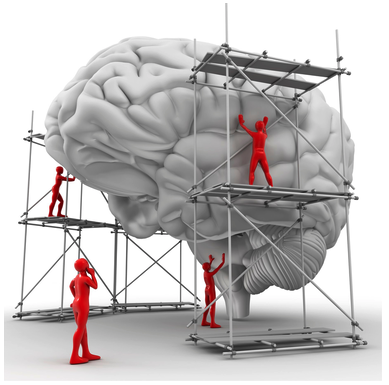It is glaringly obvious to teachers across the US that the children have been changing in the last several years. There is a huge increase in hyperactive, impulsive, aggressive, obsessive, compulsive behaviors, as well as individuals with specific learning disabilities such as dyslexia, dyscalculia, dysgraphia, and processing. This is due to a combination of many factors, such as the current technology use, current SAD diet (standard American Diet) and other environmental toxins. Our children’s brains are being rewired and systems are being bombarded resulting in their brains becoming imbalanced.
In the past 8 years, I have spent every spare moment studying and researching what to do to help struggling students. Partly because that was the population I worked with and partly because I have a son with autism at home. Not to help them cope or compensate, but to help them recover, become more whole and no longer need assistance.
I have learned from functional neurology, Brain Gym, Rhythmic Movement Training, and functional medicine how the brain grows and develops, and how physiology effects brain growth and vice versa. I have also learned how to go back to earlier stages in order to support development so that learning can eventually happen more naturally. The brain develops beginning in the brainstem and connections need to be made from there to the basal ganglia, thalamus and frontal cortex. Also, the brain grows from the motor cortex out, so if there is difficulty in either the brain stem or motor cortex, the next parts are severely compromised. Many of our children do not have appropriately connected frontal lobes causing them to be impulsive and unable to make decisions. Some struggling children have weak right hemispheres (those with more affective and social disorders) and others are weak left (those that struggle with academics and processing).
In my role as math specialist I was able to use bits and pieces of what I had been learning and witnessed nice results, but it was only bits and pieces. My whole goal in spending all this time and money in research, learning, and intervention programs and equipment was that I wanted to give my students a $6000 curriculum for free in the public school system. If you take a student to a good learning specialist for a reading disorder, they will tell the parent that they are going to work on reading, not by reading. The specialist is really going to target brain development through the integration of primitive reflexes, strengthening early movement patterns, providing lots of sensory input targeted to the weak hemisphere, and cognitive activities that target weak areas, such as working memory, or auditory processing (as examples). This work is done for 1-1.5 hours 3-5 days a week, with extensions done at home, such as home movement programs and by removing gluten and dairy from the diet, which is usually a must as well because brain disorders are also chronic brain inflammation, which essentially have roots in food sensitivities – and gluten and dairy are the biggest culprits.

I have been around reform curriculum for quite some time and yes, we do need to think about our tier 1 instruction – it makes a BIG difference in overall school performance. However we still have about average of 3 kids in each classroom who are struggling on a more fundamental level. As a school system, we need to start to acknowledge this and strategize what we want to do about it. Occupational therapists across the country are seeing a rise of 30% of children who are not on the ASD spectrum in need of support in recent years.
If we really want to make a difference, we need to re-think how we are supporting students. Granted, some only need minor homework support, but many others need something deeper, whether or not they are on an IEP. In fact, in my educational experience, so many children who need support are not low enough to qualify for an IEP, thus end up falling through the cracks.
What can we do?
Ideally? Based on the laws of neuroplasticity the key is intensity, duration, and frequency. That means that 20 minutes a week of a therapy for anything is not very effective. To effectively change the brain, children need to be provided a daily 45 minutes to 1 hour program giving them 1-1 support with sensory stimulation targeting the weaker hemisphere (as determined by a questionnaire filled out by parent or teacher). That stimulation includes vision, auditory, tactile, and proprioceptive. While their hemisphere is being targeted, student engages in sensory activities that target the growth of the corpus callosum, reflex integration, development of core muscles (necessary for proper output of brain waves), fine motor development, and cognitive skills. Those cognitive activities include tasks such as auditory memory, visual memory, working memory, auditory processing, etc. One day a week, the child should receive an in-depth balance to help shift the body’s readiness to learn.
In this scenario, one skilled teacher would be able to see 5 students daily. If the program were quarterly, then 20 students would be able to be serviced in the year. Ideally, learning centers run a minimum of 12 weeks. 12 weeks on a daily rotation would be 15 students and on an every-other day rotation would be 30 students, although time for assessment and program design need to be taken into account. One assistant trained by the skilled teacher would be able to double the case load, and so on. It is possible to see some students with similar issues in groups of 2, but a ratio more than that compromises the focus that the child is putting on his program.
Small groups can be run for students who need less intensive intervention and could be 20-30 minute program using the Listening Program in combination of specific exercises or sensory experiences.
Who is needed to make this successful?
Learning specialists (Reading, math, ESL, speech, occupational therapists, Special education teachers and their aides, etc.) are all perfect candidates. Imagine just taking 3 people and reallocating them to target struggling students, we could impact a lot of kids. The problem is that in the current structure of our educational system, each one of these professionals are pretty much handcuffed as to what services they can or cannot provide.

What will it take?
It takes the desire and guts to break away from the status quo and determination to significantly change the life of these children and not just to try to help them cope and put band-aids on their problems.
There should be an investment in equipment. If a school wants to do this right, they would need some equipment to set up a basic movement room, such as some gym mats, a mini-trampoline, and a balance beam. Some additional technology that I would highly recommend, based on research and efficacy, would be at least one license for the Interactive Metronome®, At least 6 sets of The Listening Program, a Visagraph®, and some sets of Forbrain®.
There also needs to be an investment in training. Obviously individuals need to be trained in how to use the above equipment, but they should also be trained in the fundamental principals of neurodevelopment. All teachers in a school should take at least the first course of Brain Gym®, so that they are all on the same page and using the same language. Children moving from class to class will be receiving the same message and support. Specialists should take at least 3 levels of Brain Gym® in order meet the needs of the individual student. Primary teachers and specialists should also receive training in Blomberg Rhythmic Movement Training®, where they learn deeper strategies for brain development and primitive reflex integration.
Classroom teachers should be able to conduct whole class and small group balances throughout the day, in order to increase learning readiness for the upcoming lesson. Specialists should be able to, and free to, conduct a deeper 1-1 balance at minimum of once per week.

A leap into the future
Our children are changing at an alarming rate through forces that are out of our control. The increase of wireless technology, social media, processed and artificial foods, GMO foods, pesticides and herbicides, and the near daily spraying of chemicals into our atmosphere are all some of the ways that are children are being bombarded from birth with toxins that they aren’t developmentally ready to handle. The inability to inappropriately detoxify and deal with environmental and emotional stressors causes chronic inflammation in the gut and, consequently, in the brain, leading to learning, behavior, and motor challenges.
The schools might not be able to control all of the toxic exposures, though they could minimize much if children were to work on wired computers and only have access to real, unprocessed foods during the school day; however, they can shift their thinking into how we can take the child and support them by using fundamental brain developing principles.
Educationally, we are going in a direction as if the children were like those of the 80’s, before the astronomical rise in the toxic burden. The educational shifts are great, but are not sufficient for those who have brains that are not making the connections as they should. We need to be bold and make that leap to address true individual needs, giving a whole new meaning to the phrase “No Child Left Behind.”
Want to take the first step?
Visit our educators page or contact me to line up some training for you or your staff. Together we can make a difference!




0 Comments